As the November Gratitude sesshin came to a close this year, we welcomed not only the chill of winter at the monastery but a new head of the kitchen. Shinei (Sara) Monial stepped down from the position after energetically and whole-heartedly keeping guests and residents well-fed for the 2016 year. As she transitions to the role of Shusso, or the Head of the Zendo, Kennyo (Patrick) Dunn has been hard at work fully embodying his new culinary role.
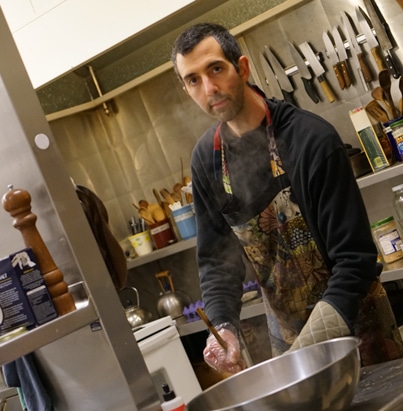
The tenzo, or head chef, oversees all food operations at the monastery from food shopping, menu planning and directing the day-to-day operations of the kitchen both during the regular schedule as well as during retreats and sesshin. This position is not taken lightly at Zen monasteries. Literally translated as “heavenly monk,” the tenzo must translate the practice cultivated in the zendo to the discipline and activity of the kitchen. While certainly demanding the wholehearted participation of the practitioner, the physical expectations of zazen are relatively simple– just sit.
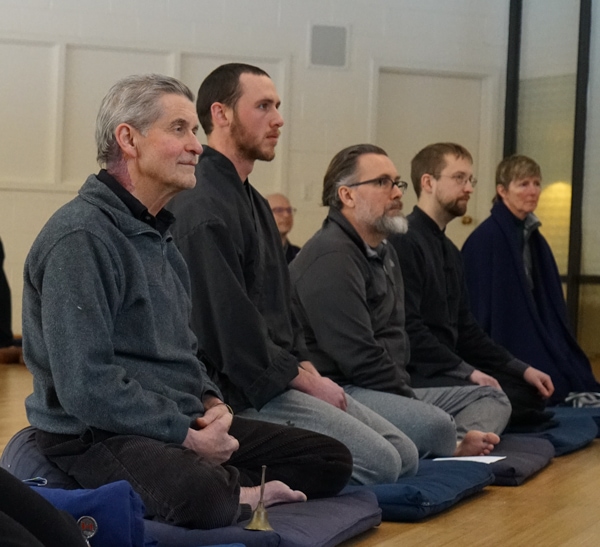
We do not maintain this stationary position simply for the cultivation of discipline or endurance. The still, seated posture allows the inner world to find clarity, gives space for the mind to quiet and open to whatever arises. The fruits of this quiet, equanimous mind would not taste quite as sweet, however, or grow fully, if they only ripened in the zendo. The task of this practice is to bring this clarity and present-moment awareness to the rest of one’s active and engaged life.
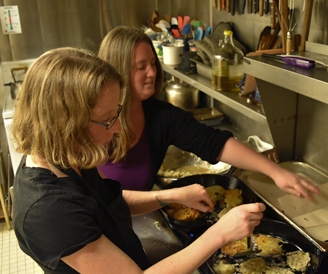
At Great Vow, as is probably true in your own dwellings, the kitchen is a wonderful site for continuous practice. At any given time, there are vegetables being chopped, soups bubbling on the stove, bread baking in the oven, dishes being washed. With all of these tasks occurring synchronously within the cooking space, working in the kitchen requires not only energy and enthusiasm but focus and lucidity as well. Speaking from my own experience in the monastery kitchen, I can find myself so swept up in my own activity, I become unaware of the mess I am making or the stories about the past and future my mind is weaving together. The ability to stay within the body as it chops carrots or dries dishes as well as keep an eye on the rest of the kitchen is essential for the tenzo. This sort of engaged activity requires constant attention and mindfulness. Thirteenth century Zen master Dogen Zenji implores the cooks to “Regard the cooking pot as your own head, the water your own life-blood.” Treat each object with care; that is the practice of the dharma.
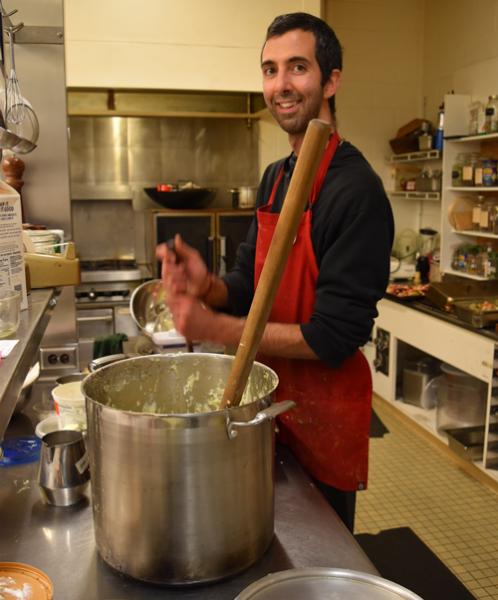
In an instant, Kennyo was asked to do just that during his entering ceremony. In front of the sangha, Chozen Roshi asked him to answer the query: “How do you turn a lettuce leaf into a sixteen-foot gold body of the Buddha?” His wordless response was swift and generous and ended with him passing out this body of Buddha to all in the zendo. Even smallest bit of food can be turned into a illuminated offering to the whole community. Since then, Kennyo has immersed himself in the role, already overseeing the meals during the 6-day Rohatsu sesshin. Kennyo is the latest resident to be considered for postulancy, the discernment period required before novice ordination as a Zen priest. Meaning “manifest” or “apparent suchness,” Kennyo took jukai in October at the beginning of our Ango period and announced his decision to enter postulancy not long afterward. Any person on the path to ordination at Great Vow must take on this year-long position either before or during this novice training.
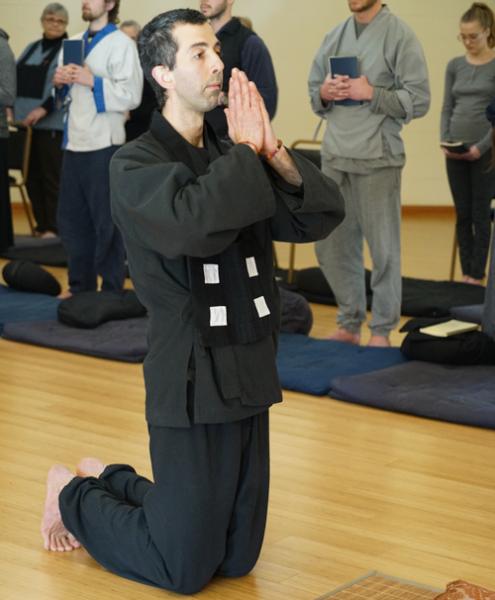
The manifestation of the dharma within this role is obvious to anyone who stays even a short time at the monastery. Each tenzo brings his or her own particular flavor to the position and Kennyo is no exception. His permeating calmness in the face of any situation and his tender care towards all beings is demonstrated not only in the environment of his kitchen but also in the food he and his staff prepare. When showing sesshin guests around the kitchen, he not only showed them where the knives and the pots were housed but gently emphasized the value of practice in the kitchen and the importance of even the smallest of actions in preparing a meal. At the monastery, we look forward to see how he will continue make the role his own as well as how the role will work on him.
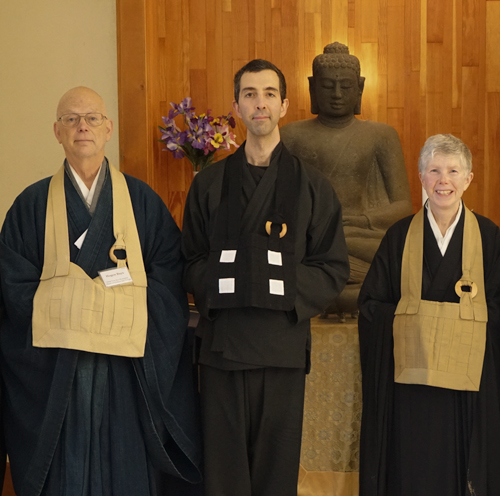
To celebrate Kennyo’s new tenzo-ship, we have included in this post a recipe for our Hollyhock Dressing, a vinaigrette served often at the monastery due to its high demand. (If you haven’t tasted it yet, just try the recipe and you’ll know why.) We’ll continue to share recipes of Great Vow favorites so you can enjoy our classic meals whenever you want. We hope these directions and measurements become lively parts of the way you eat, nourish, live.
Hollyhock Dressing
½ Cup Nutritional Yeast Flakes
⅓ Cup Water
⅓ Cup Apple Cider Vinegar or Balsamic Vinegar
⅓ Cup Soy Sauce
1 ½ Cups Sunflower Oil
Combine the nutritional yeast, water, vinegar and soy sauce in a blender until thoroughly mixed. While blending on high, pour in the oil in a slow, steady stream.
Add all the oil or stop when a desired consistency is reached.
This dressing will keep in the refrigerator for up to two weeks.
Day and night, the work for preparing the meals must be done without wasting a moment. If you do this and everything that you do whole-heartedly, this nourishes the seeds of Awakening and brings ease and joy to the practice of the community.
Written by: Chloe registrar@zendust.org
